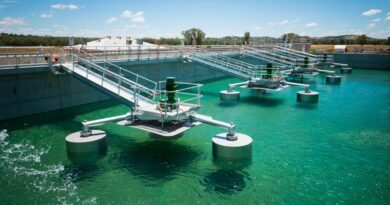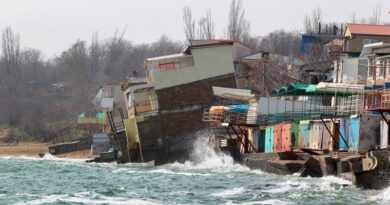‘Unparalleled water disaster awaits world; India’s GDP at risk from water stress’

The world is on the verge of an unparalleled water disaster. The bleak picture of the future is a result of increasing demand and the unrelenting effects of the climate emergency, a new report by the World Resources Institute (WRI) has said in its Aqueduct Water Risk Atlas.
Globally, around 4 billion people, half the world’s population are exposed to water stress for at least one month a year. By 2050, that number could be closer to 60 per cent, the WRI report said.
According to new data from Aqueduct, $70 trillion in GDP (31 per cent of global GDP) will be exposed to high water stress by 2050, up from $15 trillion (24 per cent of global GDP) in 2010. Just four countries — India, Mexico, Egypt and Turkey — account for over half of the exposed GDP in 2050.
According to Aqueduct 4.0, the latest iteration of WRI’s water risk framework designed to translate complex hydrological data into intuitive indicators of water-related risk, an alarming 25 per cent of the world’s population is presently facing significant water stress, with forecasts indicating that an extra billion people would be in this precarious scenario by 2050.
The exhaustive WRI study points out that countries such as Bahrain, Cyprus, Kuwait, Lebanon, and Oman, which are home to a fifth of the world’s population, are being threatened by significant water scarcity. Even a brief drought could place these countries in a precarious position of water scarcity.
Since 1960, the global demand for water has more than doubled, and by 2050, this need is anticipated to increase by an additional 20 to 25 per cent. Population increases, high industrial demands, especially in agriculture, ill-advised water policies, and inadequate investment in water infrastructure all contribute to the soaring demand. The climate issue exacerbates the situation by increasing the frequency of severe droughts and heat waves, which weaken water security.
The Middle East and North Africa are anticipated to be the focus of the catastrophe, with the whole population of these regions facing significant water stress by the middle of the century. Consequences include not only drinking water shortages but also economic setbacks and potential political confrontations that could have global ramifications, thr WRI study said.
Although Sub-Saharan Africa is not now experiencing significant water scarcity, the region’s water consumption is expected to increase by an astounding 163 per cent by 2050. This spike, driven by home water usage and agricultural irrigation requirements, might impair the region’s planned economic growth, perhaps delaying what was expected to be the fastest-growing economic region in the world.
The problem has repercussions in numerous industries, including energy, agriculture, and public health. In India, for example, water scarcity caused energy losses equivalent to power 1.5 million households for five years.
The WRI research has advocated nature-based solutions, efficient farming practices such as drip irrigation, and a transition to less water-intensive energy sources such as solar and wind. It underlines the urgent need for international cooperation on this front. Urgent, coordinated, and focused action is required to solve this escalating problem and avert disastrous outcomes. The global community must unite to handle the water problem head-on, or face severe and widespread consequences.
The Aqueduct 4.0 curated 13 water risk indicators—spanning quantity, quality, and reputational concerns—into a comprehensive framework. For five of the 13 indicators, we used a global hydrological model called PCR-GLOBWB 2 to generate novel datasets on sub-basin water supply and use.
WRI also used the PCR-GLOBWB 2 model to project future sub-basin water conditions using CMIP6 climate forcings. The projections centered around three periods (2030, 2050, and 2080) under three future scenarios (business-as-usual SSP 3 RCP 7.0, optimistic SSP 1 RCP 2.6, and pessimistic SSP 5 RCP 8.5).
“Water is central to meeting the world’s climate goals, feeding a growing population and meeting people’s basic needs for survival. But the world is failing to prioritize water issues. As countries push for a just transition away from fossil fuels, they must also transform how they manage water”, the report states.
“The world needs to urgently address the water crisis. Cost-effective solutions exist; now we need the political will and financial backing. Every level of government, communities and businesses must step up to build a water-secure future for all”.



